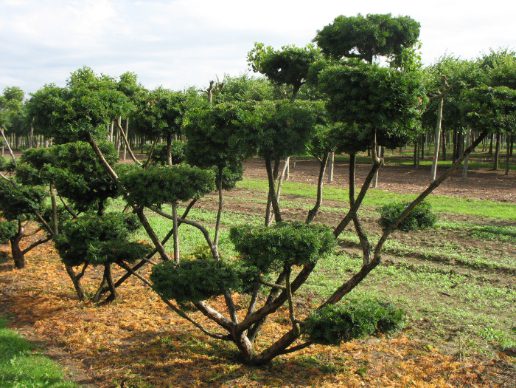Taxus baccata | English Yew | Common Yew
The Taxus baccata is a hardy, slow-growing conifer. One of the longest lived trees in Europe, some specimens are 2000-4000 years old. This is a very adaptable evergreen, ideal for clipping into hedges and other topiary shapes; a classic English tree, long associated with churchyards. When grown as a single specimen tree, it will develop a dense, irregular-shaped crown and can grow up to 15m high. The reddish-brown trunk becomes thick and flakes with maturity, and the leaves are small and dark green, needle-like with a pointed tip. The Taxus baccata does not have cones. Each seed is enclosed in a red, fleshy berry called an 'aril' that is eaten by birds and small mammals in winter. Care must be taken because every part of the Taxus baccata - apart from the red, fleshy berries - is poisonous to humans and animals. This tree grows well in most soil conditions, even shady sites and chalky locations, but thrives best in well-drained locations. It's thought that yew was planted on the graves of plague victims to protect and purify the dead, and grown in churchyards to stop 'commoners' grazing their cattle on church land.

Yew timber is incredibly strong and durable. Traditionally, the wood was used in turnery, and to make long bows and tool handles. One of the World's oldest surviving wooden artefacts is a yew spear head estimated to be around 450,000 years old. Anti-cancer compounds are harvested from the foliage of Taxus baccata and used in modern medicine. Yew trees contain the highly poisonous taxane alkaloids that have been developed as anti-cancer drugs.





